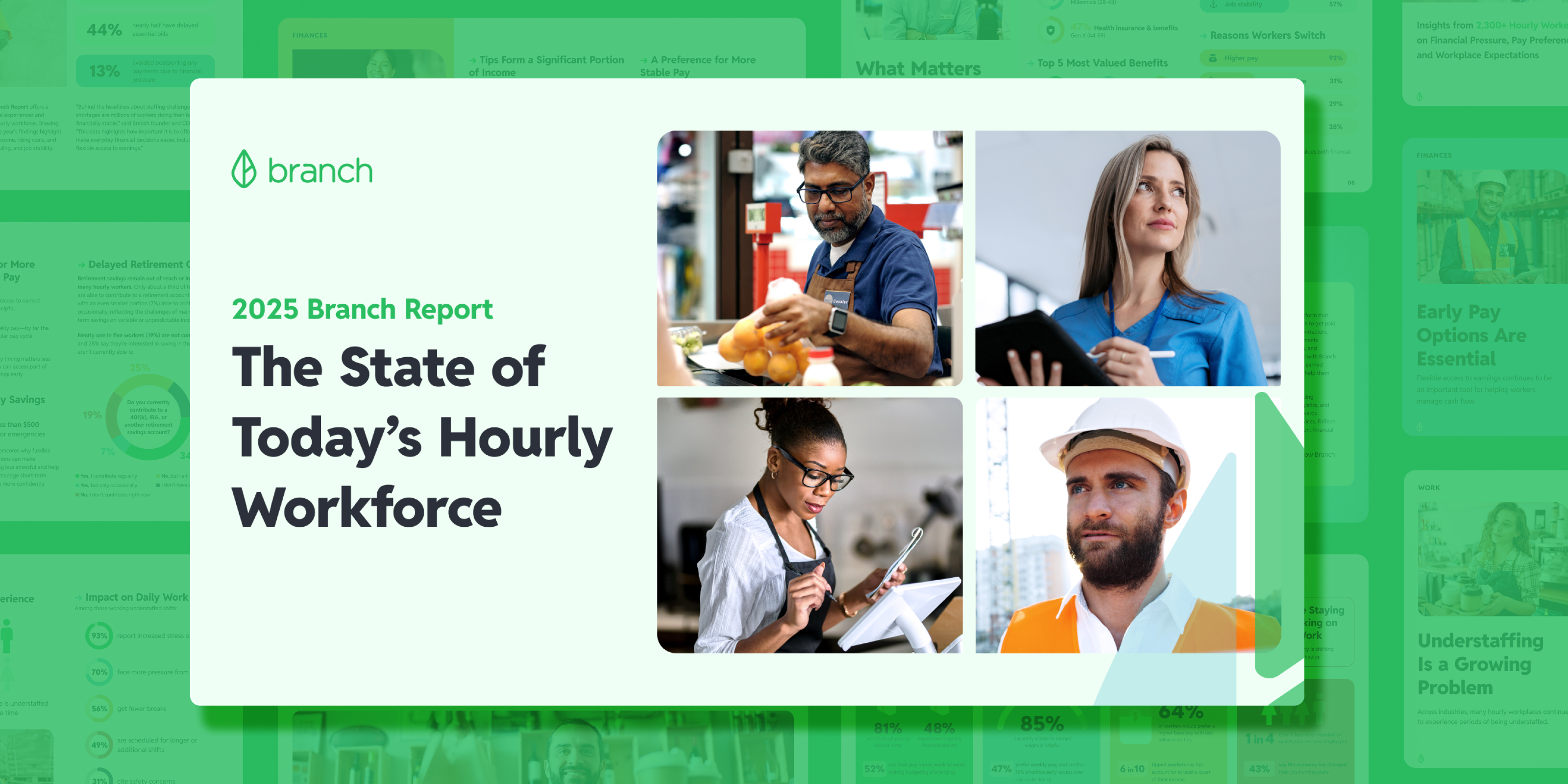
Use This Checklist to Onboard New Restaurant Employees
Every restaurant manager, owner, or director worth their salt knows the secret ingredient for success is their employees. Training them properly straight out the gate ensures you save time and money, and can even improve employee retention in the long run. That's why thorough onboarding is so crucial.
In this article we’re going to run through exactly how a restaurant employee onboarding checklist can help you run your business more efficiently, keep customers happy, and optimize the overall onboarding experience for you and your new employees.
Let’s get started.
The importance of creating a restaurant training checklist
Besides some of the obvious reasons why a checklist might be useful—standardization and tracking of the training of your new employees—let’s look at how these checklists can actually improve employee retention, give the brand a better name, and improve the overall onboarding process.
Helps standardize processes
Having an onboarding and training checklist means you’ll be able to standardize your onboarding process, but what exactly does this mean? It means that you’ll be able to:
- Save time and money in the onboarding process
- Provide consistent training to all your employees
- Reduce errors and oversights
- Increase accountability of the whole onboarding process
- Understand and improve your performance
Having a checklist means that the process will be reviewed and that every new employee gets the same information, hands in the same documents, and moves forward as expected.
The average new hire is expected to complete 54 different onboarding activities—proof that standardizing the process can really save you a lot of headaches.
Improves tracking and documentation
Similar to the previous benefit, when you can have a standard of what the process looks like, you’ll also be able to better track what each new hire is doing, and which documents are still necessary to fulfill.
In the restaurant industry you’re not only dealing with customers, but also with food safety and other regulations which means that organized documentation is not a ‘nice-to-have’ but a ‘must-have’ in order to keep your restaurant up and running.
If you have a checklist, a quick glance at it will help you see what documentation is still needed and which has been handed in. Being able to track the whole process and its documentation will also make life easier for your HR team when it comes to taxes and overall workforce management.
Increases employee retention
Employees’ onboarding experiences are powerful first indicators of their long-term relationship with a company. In fact, companies with effective onboarding can improve retention by 82% and productivity by 70%.

With a recent study showing that only 12% of employees agreed that their company did a great job at onboarding them, having a checklist is a must. With it you’ll be able to provide the same training and onboarding to all your new staff and ensure a great experience from start to finish.
Allows onboarding to take the necessary amount of time
One of the key benefits of having a checklist is that you can space out the process and let each new hire fully take in the information they're receiving. At the end of the day, with the checklist by your side there’s no need to rush and tick all the boxes at once.
As Katie Kass, Director Of Sales Marketing at St. George Inn & Bin 39 Wine Bar, in St. Augustine, Florida told us:
“We run a unique property where our guest rooms are spread out throughout six buildings and we have our team learn one area at a time. This is to not overwhelm them with information on their first few days, as our team wears many different hats and it takes about a month to be fully comfortable in the role.”
Improves customer satisfaction
At the end of the day, good training and onboarding translates to good work and competent employees. In the hospitality industry, customers must be consistently impressed for a restaurant to be successful, so having a rock-solid base for your employees is crucial. The quality of your onboarding process may end up dictating the quality of customer experience.
Your standards and parameters of service will be defined during the onboarding process—these will be paramount to the service your customers receive. A clear, thorough checklist will help you deliver great service to every customer.
Now, let’s look at what exactly there needs to be on a checklist to be effective and actually bring about all these benefits.
The ultimate checklist to onboard new restaurant employees
A checklist will include a lot of information, from explaining internal processes and the paperwork needed, to job-specific requirements and general company culture. Let’s dig deep into each of these aspects so you can make your ultimate checklist a reality
Review the employee’s application again
It's important to consider each individual and their previous work experience—as well as what they're passionate about and why they wanted to work for you in the first place—when beginning the onboarding process. Remember to re-familiarize yourself with your new hire’s experience, training, and education so you know where they’re starting from.
Have them complete onboarding paperwork
As part of the onboarding process there will be some essential documents that hiring managers will need from new hires. Pay, tax, benefits, and other forms will need to be filled out on the first day. Something useful that can be added to the employee handbook, which we will discuss later, is a how-to or step-by-step guide on filling out and handing in these documents so everything is right from the start.
Share company goals and values
Once you’ve completed the onboarding paperwork, you’ll need to present your business. This includes the restaurant’s mission statement and future goals, as well as company policies. This ensures everyone is on the same page and that the new recruits start to engage with the restaurant and restaurant managers beyond the paycheck.
Go over employee handbook & training manual
The employee handbook is a key document that every restaurant and business should have. In it you will explain all the little details about what working at the restaurant entails. Things like employee policies, dress code, paid time off, sick policies, payment and scheduling policies, and more. This is a document employees should always be able to turn to when they need a refresher, and it should be updated and recirculated regularly to reflect the latest changes and policies.
Outline job requirements, expectations & growth opportunities
One thing that employees want to know from day one is what’s expected of them, and what opportunities there are for growth in the company. Make sure you go over how raises and promotions happen. This is not only great to show transparency in your business, but it also helps employees feel valued, and that their hard work will be rewarded. Here it’s also important to specify how their work will be assessed, who their direct managers are, and who they can go to when they have any problems or issues at work.
Formally introduce the new team member
It may sound obvious, but taking the time to formally introduce your new hire to everyone on staff is crucial to making them feel welcome! As is the case for almost any other business, a restaurant’s success depends on how well a team can work together, so establishing that bond straightaway is also important to bring the whole team together.
Pair the new hire with a mentor
Pairing a new employee with a mentor or a seasoned employee is one of the most efficient ways to get them up to speed. Additionally, it helps people bond and integrate the new employee faster. The mentor can be the one that gives the new employee a full tour of the restaurant facility and shows them around during the shadowing period.

“I normally partner the team member with a senior team member or myself to give them a tour of the property and then have them shadow seasoned team members for a few days. Based on the person we will have them shadow for as long as necessary till they are comfortable in their roles.”
- Katie Kass, Director Of Sales Marketing at St. George Inn & Bin 39 Wine Bar.
Complete a “practice shift”
Go through the motions of what each shift entails from start to finish; from clocking in at the start of their sift to going through each of their assigned duties, closing tasks, and clocking out. This can set up your employee for success as they complete that first shadow week, giving them ample time to get in consistent habits and understand operations.
Spend time on sanitation guidelines
The restaurant industry doesn’t just deal with employees and customers, there’s also an added factor of food safety and sanitation, so it’s essential that you go over all the sanitation guidelines in place. After all, failing to properly onboard and train your new employees on proper sanitation can end in health and safety risks, or even the closing of an establishment due to not meeting the legal standards.
Answer any scheduling concerns
Scheduling is the area your new hire will likely have the most questions about. Be thorough in explaining scheduling processes and what the new employee's typical schedule will look like. Although the employee handbook will state the scheduling policies and explain overall operations, you’ll need to thoroughly go through these processes with your new employees. Clarity from the start is essential to avoiding problems in the future.
Establish quick & easy payments Day 1
Go over how employee payments are disbursed, including tips, and ensure your new hire is set up to start receiving their pay right away. Employees who can start receiving tips and other payments instantly are more incentivized from the start.
Nowadays there are many ways employees can get paid, however some ways might become obsolete pretty soon. For example, cash is slowly fading out and digital banking is becoming the most popular payment method. Make sure you establish a method of payment that’s beneficial not only to your employees, but also to your business.
See how Branch can help you better pay all of your employees on Day 1, even underdocumented or unbanked employees, with our Branch Card.
Solicit feedback after their first shift
After your new hire is fully onboarded, ask for their feedback. Gauge how helpful the process was for them, and if they have any remaining questions. This can help your onboarding process improve for the next hire, keeping you continuously innovating and improving your operations.
Make your onboarding process hassle-free and see retention soar
An onboarding process consists of many little steps that add up to make a big difference in the success of your business and your ability to retain employees.. HR teams and restaurant managers can greatly benefit from having a checklist to make the process smoother for them—and their new hires. Get your customers the service they deserve from day one, and help retain more of your employees with a complete onboarding checklist.
Want to learn more? Check the ways in which automation is shaping the restaurant industry and what you can do about it.
Continue reading
Unlock a Happier, More Productive Workforce







